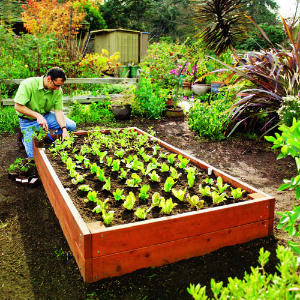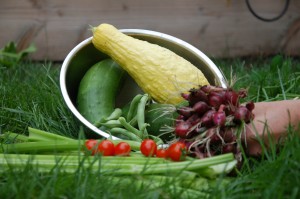 Spring is slowing making its way through the Northwest and I’m getting excited to plant my vegetable garden. Depending on where you live and what you are planting, you may have already started planting. I generally plant starts so I likely won’t plant anything for another couple weeks. Last year, I didn’t get anything in the ground until the end of May (which was a little late) but I ended up having a great garden anyway!
Spring is slowing making its way through the Northwest and I’m getting excited to plant my vegetable garden. Depending on where you live and what you are planting, you may have already started planting. I generally plant starts so I likely won’t plant anything for another couple weeks. Last year, I didn’t get anything in the ground until the end of May (which was a little late) but I ended up having a great garden anyway!
If you’ve never had a vegetable garden, I highly recommend that you start one this summer – it’s easy and a great project to do with your kids.
CONTAINER AND LOCATION
It can be as easy as using a pot for one tomato plant or you can buy or build raised beds. The first summer that I grew anything, it was one tomato plant in a pot . The next summer, my husband built me a raised bed for Mother’s Day. Raised beds can be as small or large as you have space for. Ours is long and narrow – 3 x 11 – between the edge of our grass and the fence. Often, the container where you keep your vegetables will be highly influenced by the location you have available with LOTS of sun – preferably 6-8 hours a day.
SOIL
Once you choose a container and location, start with some great soil. We have a compost bin that we stock all year just to use when planting our vegetable garden. If you don’t have a compost bin, you can purchase compost and/or soil mixes to use.
CHOOSING VEGETABLES
One of my favorite things about my garden is experimenting. I am NOT a gardener and I don’t have a green thumb. I just try new things each year to figure out what works and what doesn’t. The first summer I learned that we eat way more cherry tomatoes than plum tomatoes. Last summer I planted more celery than we could eat. I couldn’t give away all the jalapeno peppers we had and I planted beans and peas way too late to get anything out of them. When choosing vegetables to plant, choose ones that you and your kids will eat. Tomatoes, cucumbers, and zucchini are all easy to grow and you’ll get LOTS of them – with just one plant. Talk to the growers at the local nursery or farmer’s market – they are a wealth of information about the different varities of every vegetable.
 WATER
WATER
I tend to kill anything that isn’t automatically watered so we put a drip system in our raised bed. It was inexpensive and easy to hook up through our automatic watering system. You could also use a soaker hose or just get out there and manually water every day.
The very best thing about our garden is picking fresh, organic vegetables with my daughter every evening in late summer. She loves to take juicy, red Sweet 100 cherry tomatoes off the vine and pop them in her mouth. She’s learning (even at age 3) where our fresh food comes from and she’ll eat anything we grow in those garden boxes. And if you’ve been watching Jamie Oliver’s Food Revolution, you know that’s a lesson she won’t be learning in school.
For additional resources on planning your vegetable garden, check out Martha Stewart’s Vegetable Garden Guide or Better Homes and Gardens Edible Gardening Guide.
 Follow
Follow


Speak Your Mind